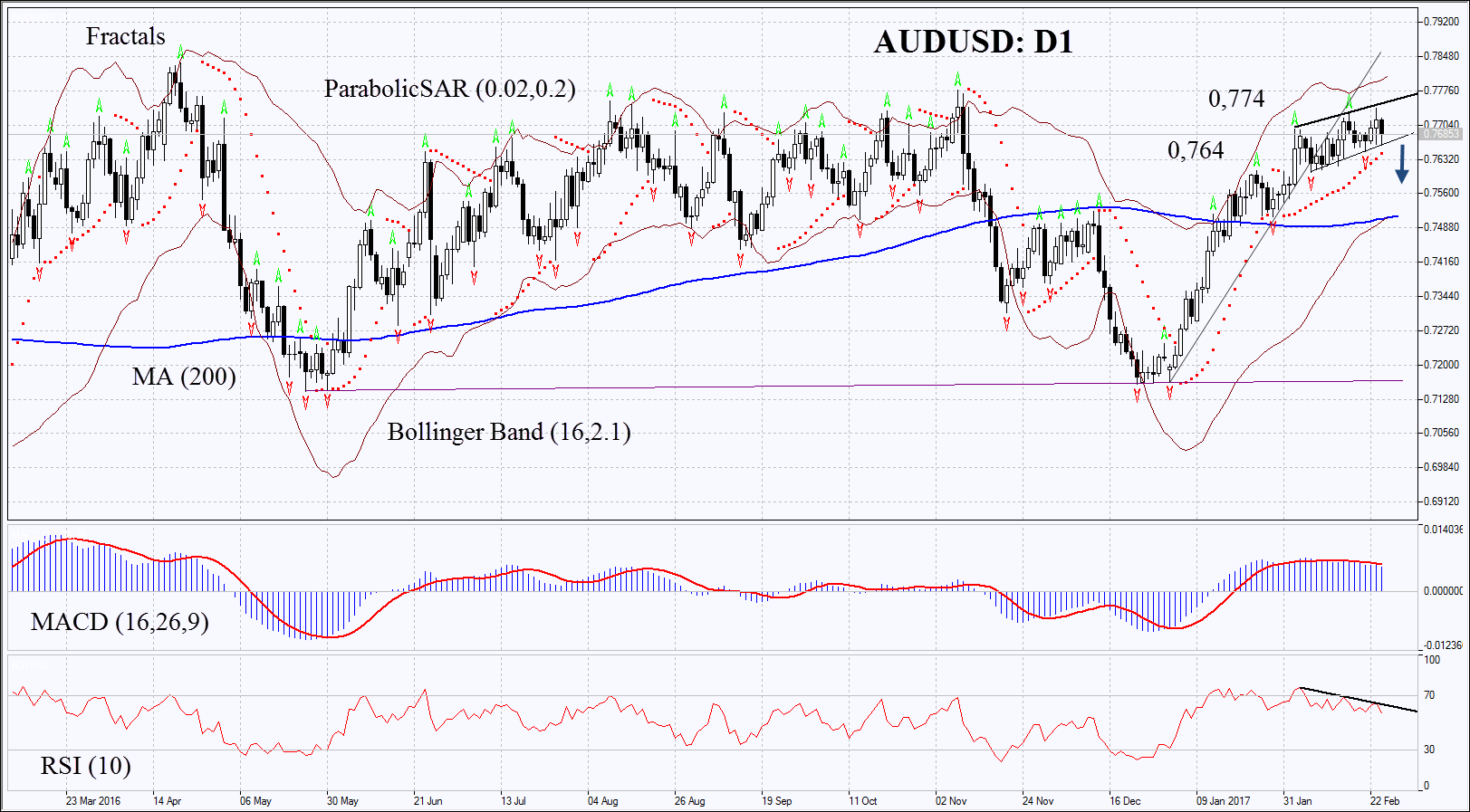Stronger currency concerns Reserve Bank of Australia
The head of the Reserve Bank of Australia (RBA) Philip Lowe said on Friday that he prefers weak Australian dollar. Investors assume that RBA may undertake some measures to devaluate the national currency. Will Australian dollar edge lower?
The currency surged 7% since the start of 2017, mainly on stronger iron ore and metals prices. They account for about 27% of Australian export. The prices of iron ore are being at their 2-1/2-year high now. They rose twofold since the start of 2016. AUDUSD may also fall in case of downward price correction. Now the rate of the RBA is being at historical low of 1.5%. This is much higher than in other developed countries. The next RBA meeting will take place on March 7, 2017, no rate change is expected. Previously the rate was cut in last August. Theoretically this may happen again if real economic indicators in Australia differ a lot from the target levels. RBA believes that inflation shall accelerate to 2-3% per year from the current 1.5%. Australian GDP shall rise 3% this and next year. Investors believe that the economy will grow 2.8% in 2017 and 3.2% in 2018. Next Tuesday the current account balance and share of exports in GDP for Q4 2016 will come out. On Wednesday the Q4 GDP and on Thursday the trade balance for January will come out. These indicators may strongly affect the Australian dollar. Most forecasts are positive. The national currency may depreciate a lot in case the real indicators fall short of expectations.
On the daily chart AUDUSD: D1 continues being in the uptrend. Thus, to open the position the level of support shall be broken down through. The paces of growth have slowed down and several technical indicators have formed signals to sell. Prices may fall in case the negative economic data come out and in case the global iron ore prices retreat.
-
The Parabolic indicator gives bullish signal. It may serve the additional level of support which has to be overcome.
-
The Bollinger bands have widened which means higher volatility.
-
The RSI is above 50. It has formed negative divergence.
-
The MACD is giving bearish signals.
The bearish momentum may develop in case AUDUSD falls below the last fractal low, the Parabolic signal and the lower boundary of the rising channel at 0.764. This level may serve the point of entry. The initial stop-loss may be placed above the last fractal high at 0.774. Having opened the pending order we shall move the stop to the next fractal high following the Parabolic and Bollinger signals. Thus, we are changing the probable profit/loss ratio to the breakeven point. The most risk-averse traders may switch to the 4-hour chart after the trade and place there a stop-loss moving it in the direction of the trade. If the price meets the stop-loss level at 0.774 without reaching the order at 0.764, we recommend cancelling the position: the market sustains internal changes which were not taken into account.
Summary of technical analysis
|
Position |
Sell |
|
Sell stop |
below 0.764 |
|
Stop loss |
above 0.774 |
This overview has an informative character and is not financial advice or a recommendation. IFCMarkets. Corp. under any circumstances is not liable for any action taken by someone else after reading this article.
Recommended Content
Editors’ Picks
EUR/USD edges lower toward 1.0700 post-US PCE

EUR/USD stays under modest bearish pressure but manages to hold above 1.0700 in the American session on Friday. The US Dollar (USD) gathers strength against its rivals after the stronger-than-forecast PCE inflation data, not allowing the pair to gain traction.
GBP/USD retreats to 1.2500 on renewed USD strength

GBP/USD lost its traction and turned negative on the day near 1.2500. Following the stronger-than-expected PCE inflation readings from the US, the USD stays resilient and makes it difficult for the pair to gather recovery momentum.
Gold struggles to hold above $2,350 following US inflation

Gold turned south and declined toward $2,340, erasing a large portion of its daily gains, as the USD benefited from PCE inflation data. The benchmark 10-year US yield, however, stays in negative territory and helps XAU/USD limit its losses.
Bitcoin Weekly Forecast: BTC’s next breakout could propel it to $80,000 Premium

Bitcoin’s recent price consolidation could be nearing its end as technical indicators and on-chain metrics suggest a potential upward breakout. However, this move would not be straightforward and could punish impatient investors.
Week ahead – Hawkish risk as Fed and NFP on tap, Eurozone data eyed too

Fed meets on Wednesday as US inflation stays elevated. Will Friday’s jobs report bring relief or more angst for the markets? Eurozone flash GDP and CPI numbers in focus for the Euro.
